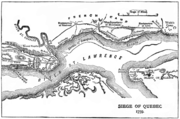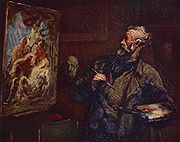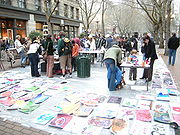The main types of creativity
Some researchers believe that creativity is a heterogeneous concept and that there are types of creativity.
For example, one can easily distinguish the following types of creativity:
The scientific creativity
Abraham Moles, in 1957, he wrote a book: Creating Scientific Kistler, Geneva.
We must quickly distinguish the innate creativity of physics (Richard Feynman), of the specific chemistry and the specific medicine.
Many of serendipity in chemical (aspartame) and medicine (Viagra).
Organizational Creativity
Isaac Getz, Organizational Creativity, Vuibert, 2002. (ISBN 2-71117-698-7) 9
The social creativity
Christophe Mouchiroud University René Descartes-Paris 5 has been a subject of research independently.
The architectural creativity
The Pritzker Prize is unanimous that we provide an ideal body of work - almost scientific - to analyze this type of creativity.
Literary Creativity
The best book on the subject is that of Gabriel Veraldi, Prix Femina 1954, and Brigiitte Veraldi, Doctor of Letters, Psychology creation Denoel, 1972.
The mathematical creativity
An abstract creativity, based mostly of intuition.
To take only mathematicians recent or contemporary Henri Poincaré, Jacques Hadamard, Srinivasa Ramanujan, Paul Erdos, Grigory Perelman, Wendelin Werner (easily accessible), etc..
Practical Creativity
It is that which allows the crew of Apollo 13 () Apollo 13 to cope with the craft of the "mailbox" under the direction of Eugene Kranz.
It is that which corresponds to problem solving practice, but with a more creative resolution of practical problems. It is the first definition given by Paul Torrance.
Strategic Creativity
Faced with an opponent intelligent imagination of the action that the unexpected surprises and saves while the power or the situation would not permit, or permits to do so with little loss and fast (lightning war). Some examples:
The Trojan horse of Greek mythology

Card during the siege of Quebec. L'Anse au Foulon was left in the middle

Artistic creativity, painting of Honore Daumier, the nineteenth century

Making art in Seattle
The capture of Quebec by Wolfe. A textbook case of war. After a siege of 3 months, Wolfe imagines taking Montcalm in the rear landing at night by surprise at the Anse au Foulon (upstream of Quebec). William Howe with 400 troops overthrew the hundreds of inexperienced militiamen placed there by Montcalm, who was not expecting to be attacked there.
This move has inspired McArthur for making Seoul landing at Inchon.
The capture of Aqaba with Lawrence of Arabia imagining through the nefud to take the impregnable fortress of Aqaba.
Parts of Bobby Fischer in chess.
Creative Process
Creativity is a process mentally involving the generation of new ideas or concepts, or new associations between ideas and concepts already in existence.
Interviews one hundred professionals and experts in creativity show that:
processes are those described in the books
They do not themselves the methods they market or recommend
Creativity and artistic photos
He remains in the public mind a photograph shown in Table caricature of Honoré Daumier, for example. One of the misunderstood artist and hungry. It was the nineteenth century. The art market contenporain, sales of Sotheby's, Christie, the FIAC we prove otherwise.
Creativity and Leadership
For the contemporary American psychologist Robert Sternberg, creativity and leadership are inextricably linked. On the one hand, creativity is a form of leadership and, secondly, one of the three components of leadership is creativity.
Artistic creativity and madness
Some authors such as J. Philippe Rushton, Philippe Brenot and Kay Redfield Jamison sought to establish a link between artistic and literary creation and madness. This would be similar and creativity of psychosis in that it involves the mechanisms of deficit of latent inhibition or of apophenia. Recently, Elias and Régis Blain Hantouche have highlighted the link between the alternations of mood (cyclothymia) and creativity.
This approximation is based on the fact that a number of artists (in fact, statistically very few) have had psychiatric problems at some point in their lives:
Writers Gerard de Nerval, Guy de Maupassant, Charles Baudelaire, Virginia Woolf, Ernest Hemingway;
painters Vincent Van Gogh, Richard Dadd, Dora Maar;
the composer Robert Schumann ...
the "architect": Louis II of Bavaria, the factor Horse